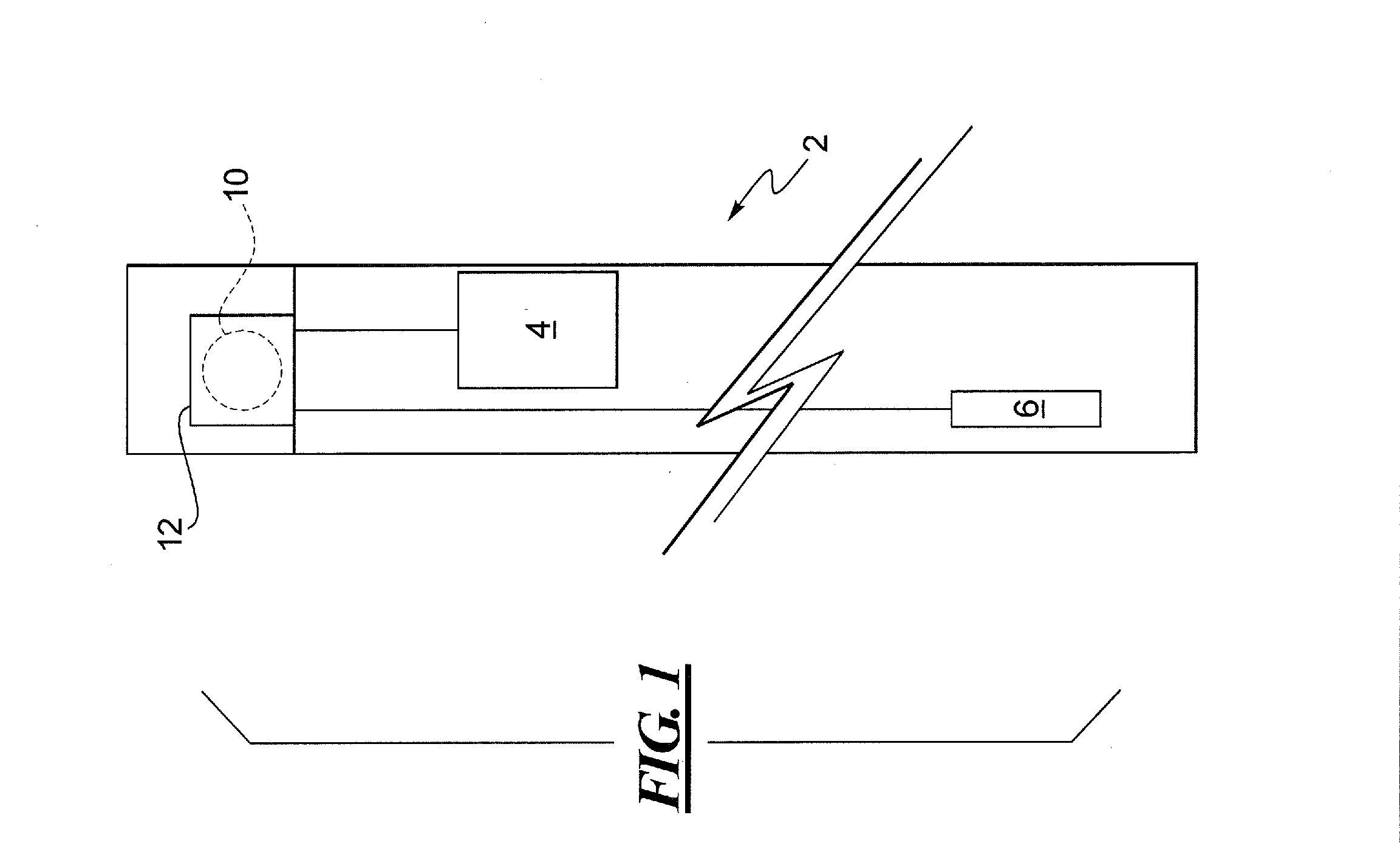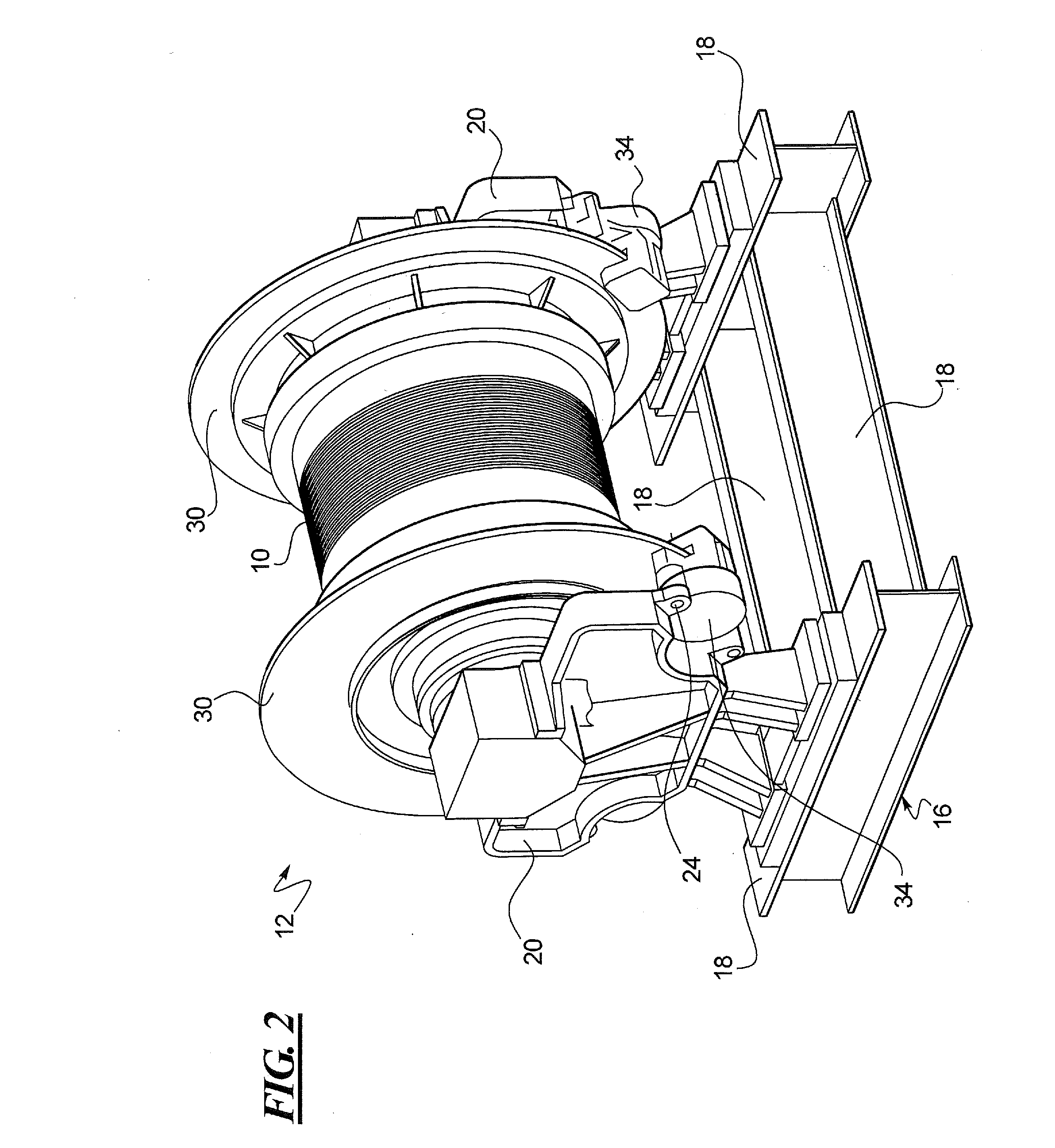Permanent Magnet Centering System for Brake
a permanent magnet and brake technology, applied in the field of brake system, can solve the problems of stictional and frictional losses, adding to the overall cost and maintenance of the disc brake, and not being able to meet the needs of the caliper, and achieve the effect of facilitating the centering of the fixed elemen
- Summary
- Abstract
- Description
- Claims
- Application Information
AI Technical Summary
Benefits of technology
Problems solved by technology
Method used
Image
Examples
Embodiment Construction
[0030]Referring now to FIG. 1, a simplified schematic representation of an elevator system 2 is shown, in accordance with at least some embodiments of the present disclosure. While all of the components of the elevator system 2 have not been shown and / or described in detail herein, a typical elevator system may include an elevator car 4 connected to a counterweight 6 via hoisting ropes (not shown). The hoisting ropes may extend over a traction sheave 10 driven by an electric motor within the traction sheave (e.g., the traction sheave 10 may be the rotor of the electric motor) to move or halt the elevator car 4 as desired. A disc brake system (described below) on the traction sheave 10 helps slow or halt the elevator system 2. The electric motor, the traction sheave 10 and the disc brake system are collectively referred to herein as an elevator traction machine 12. The elevator system 2, with the counterweight 6, operates in a known manner and is therefore, not described in detail fo...
PUM
 Login to View More
Login to View More Abstract
Description
Claims
Application Information
 Login to View More
Login to View More - R&D
- Intellectual Property
- Life Sciences
- Materials
- Tech Scout
- Unparalleled Data Quality
- Higher Quality Content
- 60% Fewer Hallucinations
Browse by: Latest US Patents, China's latest patents, Technical Efficacy Thesaurus, Application Domain, Technology Topic, Popular Technical Reports.
© 2025 PatSnap. All rights reserved.Legal|Privacy policy|Modern Slavery Act Transparency Statement|Sitemap|About US| Contact US: help@patsnap.com



